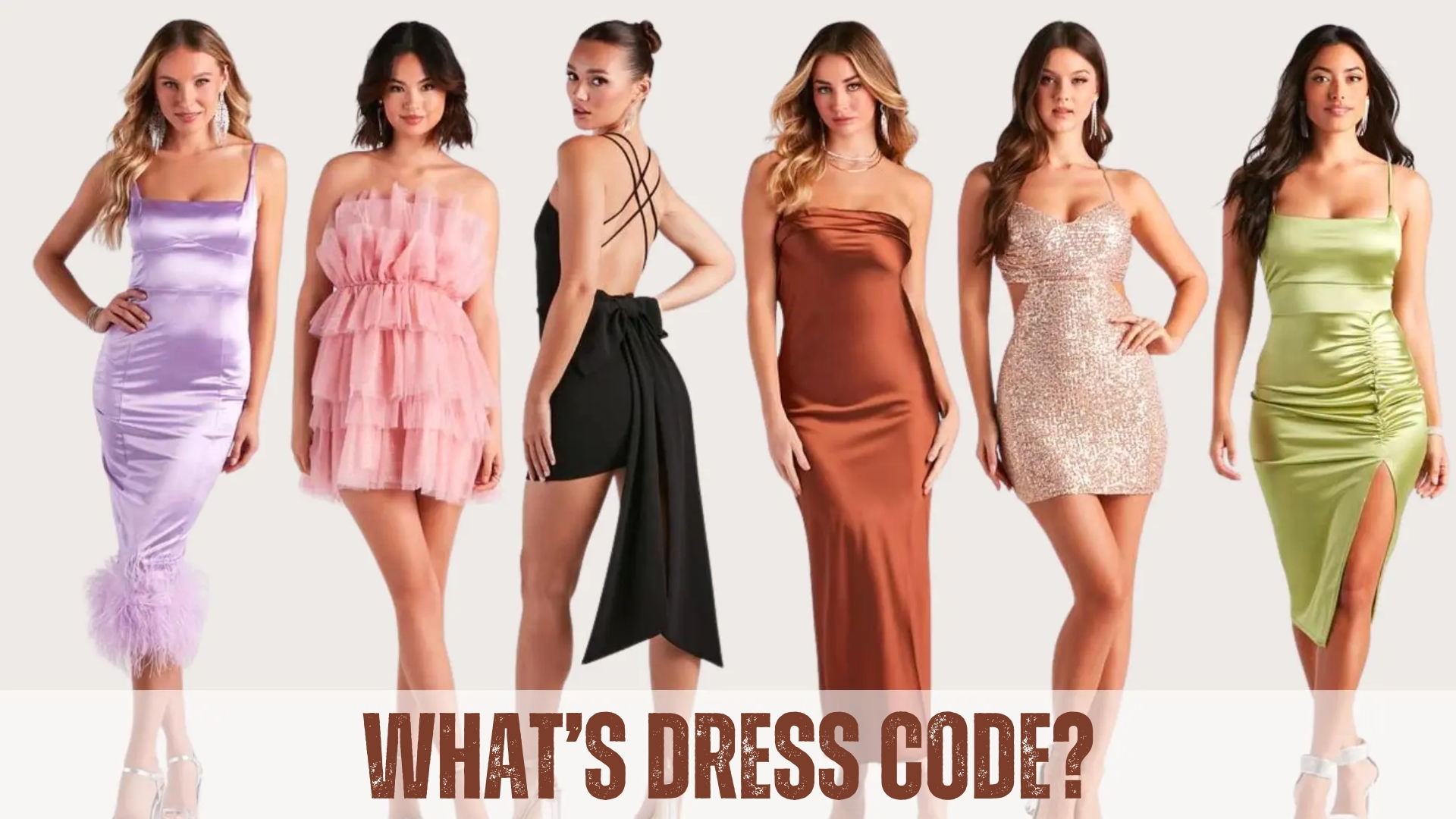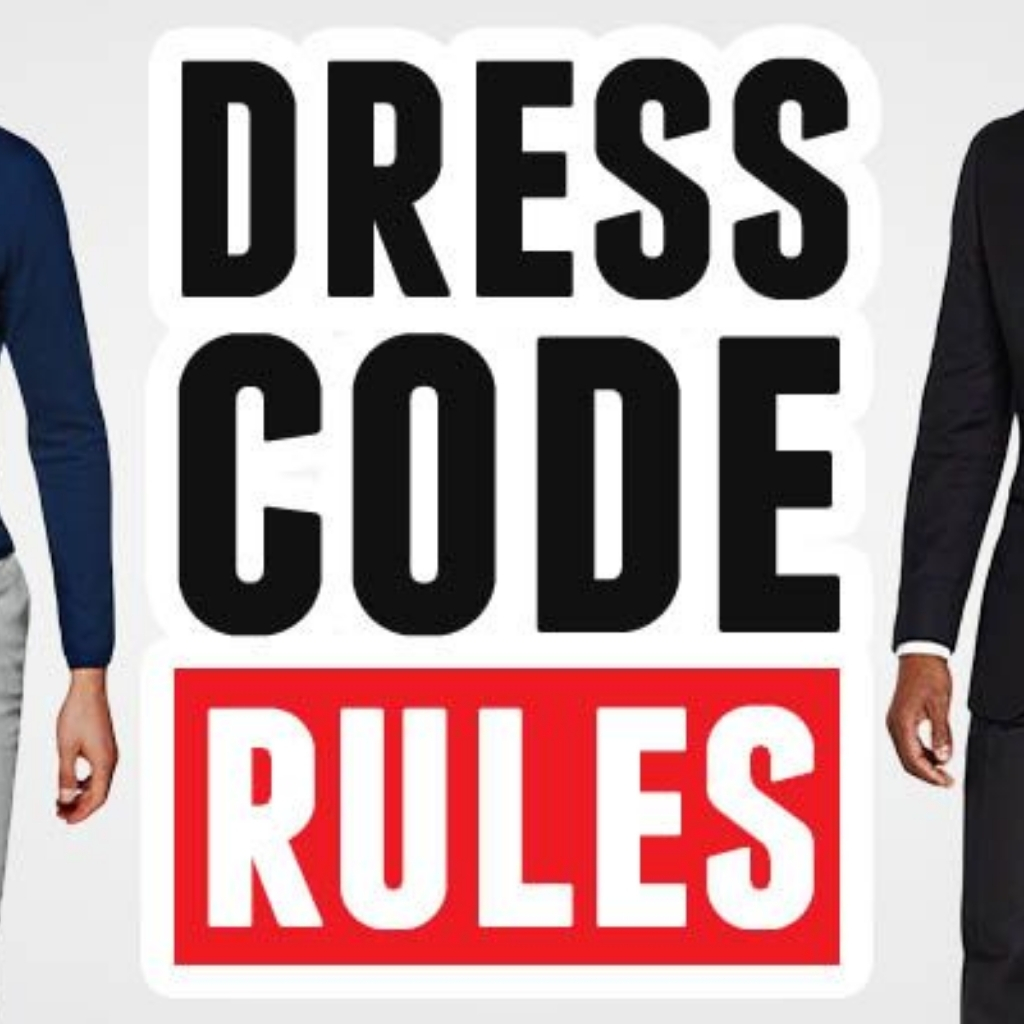In today’s fast-paced world, first impressions matter more than ever. Whether you’re heading to a job interview, attending a wedding, or preparing for a corporate event, understanding the appropriate dress code can make all the difference. But with so many terms—business casual, smart casual, black tie, cocktail attire—navigating the world of dress codes can feel overwhelming.
A dress code is more than just a set of rules; it’s a reflection of culture, professionalism, and respect for the occasion and the people around you. Wearing the right attire not only helps you fit in but also boosts your confidence and ensures you present yourself in the best possible light.
In this ultimate guide, we’ll break down everything you need to know about dress codes. From decoding the most common types to offering practical tips and outfit ideas, this article will help you master the art of dressing appropriately for any situation. Whether you’re a seasoned professional or just starting out, you’ll find valuable insights to help you dress for success.
Understanding Dress Codes: Why They Matter

Dress codes are guidelines that dictate what is considered appropriate attire for specific occasions or environments. They serve several important purposes:
- Professionalism: In workplaces, dress codes help maintain a standard of professionalism.
- Cultural Norms: Dress codes often reflect societal values and cultural expectations.
- Event Appropriateness: They ensure that guests or participants dress suitably for the formality of an event.
- Brand Image: For companies, dress codes can reinforce brand identity and values.
The Evolution of Dress Codes
Traditionally, dress codes were rigid and strictly enforced. Over time, however, they have evolved to accommodate changing social norms, workplace cultures, and fashion trends. Today, many organizations and events offer more flexibility, but understanding the basics remains crucial.
Types of Dress Codes and What They Mean
Let’s explore the most common dress codes you’ll encounter, along with examples and tips for each.
1. Casual Dress Code
Definition:
Casual dress codes offer the most flexibility, allowing for comfort and personal expression.
Typical Settings:
- Informal gatherings
- Casual Fridays at work
- Outdoor events
What to Wear:
- Jeans, t-shirts, polos
- Sneakers or flats
- Casual dresses or skirts
What to Avoid:
- Clothing with offensive slogans or images
- Dirty or torn clothing
2. Smart Casual Dress Code
Definition:
A step above casual, smart casual combines comfort with a polished appearance.
Typical Settings:
- Informal business meetings
- Dinner parties
- Art galleries
What to Wear:
- Dressy jeans or chinos
- Blouses or button-down shirts
- Blazers, cardigans
- Loafers, boots, or dressy flats
What to Avoid:
- Athletic wear
- Flip-flops
3. Business Casual Dress Code
Definition:
A popular choice in modern workplaces, business casual is professional yet relaxed.
Typical Settings:
- Offices
- Conferences
- Networking events
What to Wear:
- Slacks or khakis
- Collared shirts, blouses
- Knee-length skirts or dresses
- Closed-toe shoes
What to Avoid:
- Jeans (unless specified)
- Sneakers
4. Business Professional Dress Code
Definition:
A more formal standard, business professional is common in corporate environments.
Typical Settings:
- Law firms
- Financial institutions
- High-level meetings
What to Wear:
- Suits (matching jacket and pants/skirt)
- Dress shirts and ties
- Conservative dresses
- Leather shoes
What to Avoid:
- Bright colors or flashy accessories
- Open-toed shoes
5. Cocktail Attire
Definition:
Cocktail attire is semi-formal and stylish, ideal for evening events.
Typical Settings:
- Cocktail parties
- Weddings
- Fundraisers
What to Wear:
- Knee-length dresses
- Dress pants with elegant tops
- Dark suits
- Dress shoes or heels
What to Avoid:
- Denim
- Casual footwear
6. Black Tie Dress Code
Definition:
Black tie is formal evening wear, reserved for the most elegant occasions.
Typical Settings:
- Galas
- Formal weddings
- Award ceremonies
What to Wear:
- Tuxedos
- Floor-length gowns
- Black dress shoes
- Elegant accessories
What to Avoid:
- Short dresses
- Business suits
7. White Tie Dress Code
Definition:
The most formal dress code, white tie is rare and reserved for state dinners and royal events.
Typical Settings:
- State banquets
- Royal ceremonies
What to Wear:
- Tailcoat, white bow tie, and waistcoat
- Full-length ball gowns
- White gloves (optional for women)
What to Avoid:
- Anything less formal than the above
Dress Code Comparison Table
| Dress Code | Typical Attire | Settings | Level of Formality |
|---|---|---|---|
| Casual | Jeans, t-shirts, sneakers | Informal, social | Low |
| Smart Casual | Dressy jeans, blouses, loafers | Informal business, social | Medium-low |
| Business Casual | Slacks, collared shirts, skirts, closed shoes | Offices, conferences | Medium |
| Business Professional | Suits, dress shirts, ties, conservative dresses | Corporate, formal business | High |
| Cocktail | Knee-length dresses, dark suits, heels | Parties, weddings | High |
| Black Tie | Tuxedos, floor-length gowns | Galas, formal events | Very High |
| White Tie | Tailcoat, ball gowns, white gloves | State, royal events | Highest |
Navigating Dress Codes in the Workplace

The Importance of Workplace Dress Codes
Workplace dress codes help maintain a professional environment and ensure employees represent the company appropriately. They can also impact company culture, morale, and even productivity.
Adapting to Remote and Hybrid Work
With the rise of remote and hybrid work, many companies have relaxed their dress codes. However, it’s still important to dress appropriately for video meetings and in-person events.
Tips for Remote Work Attire:
- Opt for comfortable yet presentable clothing.
- Avoid pajamas or overly casual wear during video calls.
- Keep a blazer or smart top handy for impromptu meetings.
Dress Codes for Special Occasions
Weddings
Weddings often specify a dress code on the invitation. Common options include:
- Formal/Black Tie: Tuxedos, floor-length gowns
- Semi-Formal/Cocktail: Dark suits, cocktail dresses
- Beach Casual: Sundresses, linen suits, sandals
Parties and Social Events
Always check the invitation or ask the host if you’re unsure. When in doubt, it’s better to be slightly overdressed than underdressed.
Religious and Cultural Events
Some events may require modest or traditional attire. Research or ask about expectations to show respect.
Dress Code Etiquette: Do’s and Don’ts
Do’s
- Read Invitations Carefully: Look for dress code clues.
- When in Doubt, Ask: It’s better to clarify than guess.
- Err on the Side of Formality: Overdressing is usually safer than underdressing.
- Pay Attention to Grooming: Clean, well-maintained attire always makes a good impression.
Don’ts
- Ignore the Dress Code: It can be seen as disrespectful.
- Wear Inappropriate Clothing: Avoid anything too revealing, casual, or flashy unless specified.
- Forget About Comfort: Choose attire that fits well and allows you to feel confident.
Dress Code Trends: What’s Changing?
- Inclusivity: More workplaces are adopting gender-neutral dress codes.
- Sustainability: Eco-friendly and ethical fashion choices are gaining popularity.
- Personal Expression: Many environments now encourage individuality within dress code guidelines.
FAQ
What is the difference between business casual and smart casual?
Business casual is more formal than smart casual, typically requiring slacks, collared shirts, and closed-toe shoes. Smart casual allows for more relaxed pieces like dressy jeans and stylish tops.
Can I wear jeans to a business casual office?
It depends on the company policy. Some business casual offices allow dark, well-fitted jeans, while others do not. Always check your company’s dress code guidelines.
What should I do if I’m unsure about the dress code?
When in doubt, ask the host or organizer for clarification. Alternatively, choose an outfit that is slightly more formal than you think is required.
Are dress codes still relevant in 2024?
Yes, dress codes remain relevant, especially in professional and formal settings. However, many environments now offer more flexibility and inclusivity.
How can I express my personal style within a dress code?
Opt for accessories, colors, or subtle patterns that reflect your personality while adhering to the guidelines.
Conclusion: Mastering the Art of Dress Codes
Understanding and respecting dress codes is an essential life skill. Whether you’re dressing for work, a special event, or a casual outing, following the appropriate guidelines shows respect for the occasion and the people around you. It also helps you feel confident and comfortable in any setting.
Remember, dress codes are not about restricting your individuality—they’re about ensuring everyone feels comfortable and the event or environment maintains its intended tone. By familiarizing yourself with the different types of dress codes and following the tips in this guide, you’ll always know what to wear and how to make a great impression.